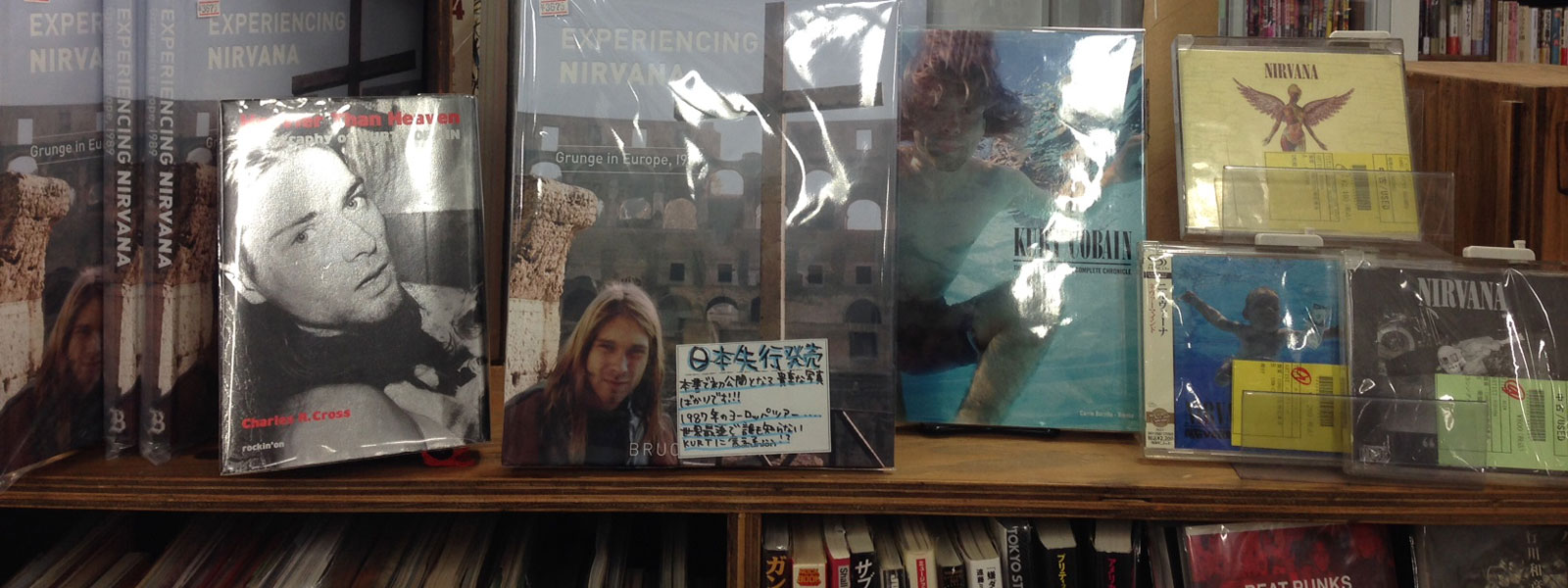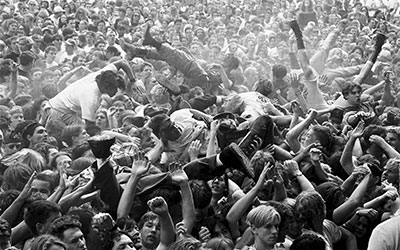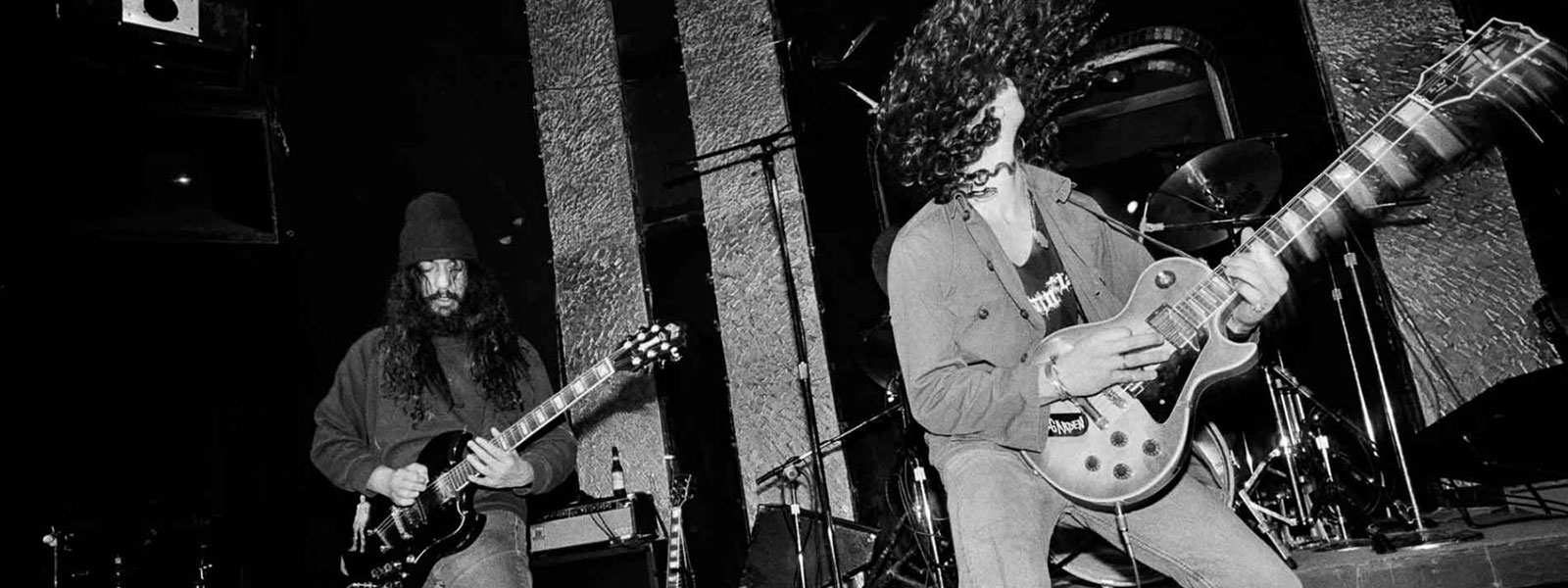Rock Collection: The Northwest Passage book list
The “grunge scene” made an impact on the music charts, but it also spawned a number of very good music books. Here’s some reading material for your grunge library
For a while, the only book written on the northwest music scene as a whole was Clark Humphrey's Loser. And while it's an excellent book, a phenomenon like "grunge" deserves more than one book. Years after Kurt Cobain's death, after record labels stopped searching for the next great grunge group, and after Seattle stopped being called "the music capital of the world," the northwest music scene started to get the book coverage it deserved. Nostalgia is a powerful force.
This list looks all the books out there — both the good and the bad. Happy reading!
*Note: This list doesn’t cover books of individual bands. There are also books worth checking out for bands like Nirvana, Mudhoney and Pearl Jam, which will be covered later.
Essential reads
Everybody Loves Our Town: An Oral History of Grunge
Mark Yarm
Crown Archetype, 2011
For those who have already read the first grunge oral history (Greg Prato’s Grunge is Dead, 2009), you might think that Mark Yarm’s offering would be redundant or unnecessary. But while Prato’s book is an essential read in its own right, Everybody Loves Our Town definitely tells the grunge story in its own way.
Yarm’s book was inspired by an oral history he put together on Sub Pop Records (we’re still waiting for that book, Mark…) and of course includes discussion of all the big names – Nirvana, Pearl Jam, Alice in Chains, Soundgarden – but also some of the bands you’d never hear of if MTV and Spin were your only sources; bands like Cat Butt, Coffin Break, the Gits, Love Battery, et al). At 500+ pages, you’ll hear many voices on how grunge started, how it exploded around the turn of the decade, and how it came crashing down.
Everybody Loves Our Town should put the end to some of the misconceptions about the northwest music scene. For one, despite grunge’s reputation for being moody and surly, a lot of the characters were actually funny, and that is clearly demonstrated in the book. The northwest music scene was more than just the so-called big four bands and Sub Pop. And while some fondly recall a Seattle scene with a united, “us-against-the-world” attitude, you’ll learn that was not the case at all. There was a lot of acrimony – between bands, individuals, and record labels. Seattle and grunge were not immune to the sniping and jealousy that has always been a part of music.
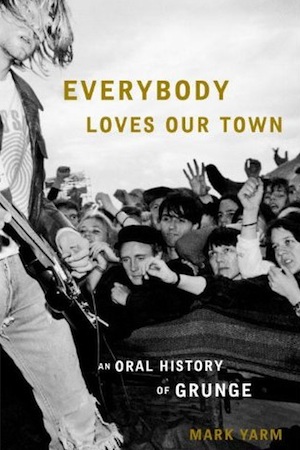
So even if you’ve already read Prato’s book, don’t worry that you’ll be reading the same book twice. Obviously, when you are discussing the same time period, you’ll have some content overlap, but nonetheless, you get different subjects, different participants and different quotes. If you’re like me, you’ll appreciate any opportunity to revisit the history of grunge.
And it’s about time grunge got a hardcover book.
Make sure you follow Yarm on Twitter, and check out the Everybody Loves Our Town Tumblr page as well.
Girls to the Front: The True Story of Riot Grrrl
Sara Marcus
Harper, 2010
Are grunge and riot grrrl related? Well, they did share a similar geography and some of the same influences; Kurt Cobain, for one, was a supporter. But, for the most part, riot grrrl was largely independent of what the pop culture world called “grunge.”
Riot Grrrl was as much a political feminist movement as it was a music movement and Girls to the Front makes sure to cover both the political and musical aspects. The book covers the beginnings of Bikini Kill, Riot Grrrl’s birth in Olympia, and the spread of Riot Grrrl through independent chapters all over the United States and United Kingdom. It talks at length about the misrepresentations by the mass media, the sniping between different factions of Riot Grrrl, and its eventual disappearance from pop culture. Marcus’ book is considered the first-ever history of Riot Grrrl, and remains the standard when it comes to books on this topic.
Bikini Kill singer Kathleen Hanna gave the book her strong approval and that should be all the motivation you need to read the book.
Grunge is Dead: The Oral History of Seattle Rock Music
Greg Prato
ECW Press, 2009
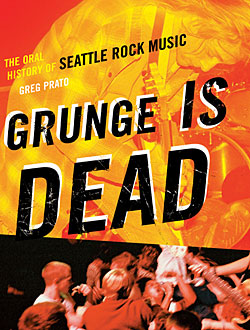
Billing itself as the “oral history of Seattle Rock Music,” Prato’s book is a wonderfully told story of the northwest music scene using only the testimony of the people involved. Prato interviews hundreds of individuals, including northwest luminaries Eddie Vedder, Jerry Cantrell, Kim Thayil, Mark Arm, Slim Moon, Art Chantry, Jack Endino, and more. And despite its title, the book covers more than just the “Big Four” of Seattle bands; it explores the Riot Grrrl movement and overlooked bands such as Mudhoney, Truly, The Melvins, TAD, and The Screaming Trees.
One of the most touching and poignant parts of the book is the discussion of the heroes that didn’t stay with us – Andy Wood, Layne Staley, Kurt Cobain. It’s a great read.
Loser: The Real Seattle Music Story
Clark Humphrey
Feral House, 1995 (original edition); Abrams, 1999 (second edition)
The first book on the Seattle music scene, Clark Humphrey’s book details the entire history of Seattle (and regional) music, from the earliest days of the city to the grunge era. The coverage of bands is incredible – while it covers Nirvana and Pearl Jam like any other Seattle music book, it covers almost every northwest band any can think of – Fastbacks, Flop, The Gits, The Posies, Bikini Kill, Beat Happening, Built to Spill, the U-Men, Blackouts. The book is divided into chapters based on years and it jumps around from band to band quite a bit. Sometimes it makes the story a little hard to follow, but you also really start to appreciate how interconnected the northwest music scene was.
While the second edition contains a few extra chapters, including a very good “where are they now?” section, it appears the original part of the book was photocopied to make the second version, making a lot of the photos very low quality. Either version of the book is a must-buy.
The Strangest Tribe: How A Group of Seattle Rock Bands Invented Grunge
Stephen Tow
Sasquatch Books, 2011
Despite what some think, “grunge” didn’t start with Ten or Nevermind. It was a culmination of decades worth of people and music, even though it only manifested in the public eye with Pearl Jam and Nirvana. There’s a ton of books and articles that talk about what happened after everything got big, when Seattle owned alternative radio and MTV, when you couldn’t go to the mall without seeing every other kid in a flannel shirt. But The Strangest Tribe is an attempt to cover this neglected pre-Nevermind Seattle music scene.
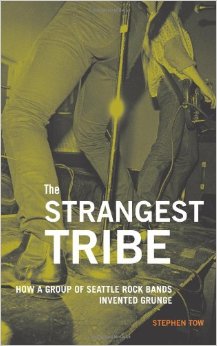
Author Stephen Tow talks to a number of individuals in the 70s/80s Seattle music scene, many of whom weren’t well known (but very influential nonetheless): Kurt Bloch, Scott McCaughey, Conrad Uno, Chris Eckman and Leighton Beezer; of course, the boldface names like Jack Endino, Tad Doyle and Stone Gossard are included as well. This book is essential to those who want to learn how the seeds of the 90s grunge scene were planted years before Nirvana was even a band.
If you want to know how the northwest music scene was before Seattle became the epicenter of American alternative rock, this is your starting point. This book might not be of interest to those who only care about Nirvana or Pearl Jam, but simply put, you will not have a complete idea of the whole scene if you don’t know the bands Tow discusses in The Strangest Tribe.
Follow Tow on Twitter, and check out the The Strangest Tribewebsite for more info on the scene.
Taking Punk to the Masses: From Nowhere to Nevermind
edited by Jacob McMurray
Fantagraphics Books, 2011
The “Taking Punk to the Masses” exhibit at the Experience Music Project is an essential visit and this book is the perfect addendum to viewing the exhibit, or a decent substitute in case you aren’t able to make it to Seattle.
The book features images of over 100 key artifacts from the evolution of punk music along with the story behind each of them. Featured inside are Jason Finn’s Love Battery drumkit, the Nirvana Love Buzz 7”, Kurt Cobain handwritten lyrics, a guitar used by Mudhoney’s Steve Turner, Soundgarden’s original demo tape and a ton of tour posters and other artifacts. The book also comes with a DVD containing over two hours of exclusive interviews.
Love Rock Revolution
Mark Baumgarten
Sasquatch Books, 2012
The underground Seattle scene wasn’t all Sub Pop – it wasn’t all Seattle either. For thirty-plus years, Olympia’s K Records has nurtured an underground music empire under a lo-fi, DIY ethos. It was and is a significant part of the northwest music scene. People in Olympia knew the impact of K, though it was almost criminally ignored during the Seattle grunge hype.
Baumgarten’s book is a fantastic telling of the punk story as seen through the eyes of K Records and its founder, the influential Calvin Johnson. It covers the label’s humble beginnings, the label’s DIY ethos, the influential International Pop Underground festival, its role in promoting riot grrrl, as well as the label’s relationships with the indie/punk movement.
The northwest music story can’t fully be told without talking about some of the smaller labels, such as K. It may not have made much of a difference on the charts, but K had a direct influence on the northwest music scene.
Experiencing Nirvana: Grunge in Europe, 1989
Bruce Pavitt
Bazillion Points 2013
With the title, one might think the book was exclusively focused on Nirvana. But Pavitt’s book covers much more than the much-ballyhooed band, a group that already has been covered a countless number of times. Experiencing Nirvana is labeled as a “microhistory,” telling the story of three Sub Pop bands as they toured through Europe in November/December 1989. But despite its modest scope and the fact that it’s mostly told through photographs, Experiencing Nirvana tells more of than just the tour.
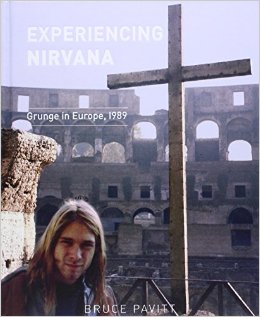
Experiencing Nirvana will help you understand the financial troubles of the fledging label, the humble beginnings of three amazing bands, and eerily, early signs of the demons that haunted Kurt Cobain. The photos are a collection of Pavitt’s personal photos intertwined with some professional photos, an eclectic mix that really does give the reader the opportunity to “experience” nirvana.
As none of these bands were household names at the time, this book gives a perspective of the label and the bands that only Bruce Pavitt could provide. A must-have for your book collection.
Sonic Boom! The History of Northwest Rock: From Louie Louie to Smells Like Teen Spirit
Peter Blecha
Backbeat Books, 2009
Unbeknownst to most people, music in Seattle and the northwest has a rich history that goes back well beyond grunge. Far beyond being just the hometown of Jimi Hendrix (whose career only took off after his departure), the region was the home of a burgeoning garage rock scene and a number of nationally known acts. Going back to the '50s, Seattle music historian Peter Blecha details the pre-grunge history of the region, which included such notable bands like the Kingsmen, the Ventures, the Frantics, the Sonics, the Wailers, Paul Revere and the Raiders, Heart and Queensrÿche.
Despite Mudhoney on the book cover and the book's subtitle, the book is a lacking on coverage of the "grunge" era, but there are other books for coverage on that subject. Along with Clark Humphrey's Loser, reading Sonic Boom this is one of the few books that will give you a better understanding of the forgotten northwest music scene before Nirvana and Sub Pop.
Worth a read
Our Band Could Be Your Life, Scenes from the American Indie Underground, 1981–1991
Michael Azerrad
Little, Brown, 2002
Not a grunge book, but a profile of thirteen of the most important indie bands of this era. The last two chapters, however, cover two very important bands of the northwest music scene, Beat Happening and Mudhoney. And as the latter band’s history is intertwined with the history of Sub Pop, the book also discusses the most well-known label of the northwest music scene. Azzerad, who wrote the definitive Nirvana biography, Come As You Are: the Story of Nirvana, is well-versed in the independent music scene. Any of the band’s chapters seem like they could have been the beginning of their own books.
As the book covers more than just “grunge,” this was left off the grunge essential reads list. But if you are a fan of independent music, this really is a must-read, with excellent profiles on bands like Dinosaur Jr, Fugazi, Sonic Youth, the Replacements, Black Flag, and others.
Grunge Seattle
Justin Henderson
Roaring Forties Press, 2010
Grunge Seattle attempts to catalog the grunge scene through the locales that made the scene happen – places like Reciprocal Recording, London Bridge Studios and the Crocodile Café. While it does a good job in that regard, most of the book is basic grunge history with little additional insight. It’s concise, but because of its short length, it really doesn’t offer anything that isn’t covered better in one of the many other grunge books.
The map of Seattle music landmarks does a nice job of pointing out all the various settings that made the Seattle scene what it was.
Not even worth borrowing from the library
Accidental Revolution: The Story of Grunge
Kyle Anderson
St. Martin’s Griffin, 2007
In the last few years, there’s been a revival of interest in the grunge story. One of the first books in this wave of “grunge nostalgia” was Spin editor Kyle Anderson’s Accidental Revolution. Thankfully, it wasn’t the last book on the subject, because, simply put, this book isn’t good.
The author tries really hard to look at grunge through a pop culture lens, which is certainly one approach. Unfortunately, he seems to use that as an excuse to be loose with the facts. Any book with “The Story of Grunge” as a subtitle should have a better grasp of the subject. The book is full of factual errors and seems to be more of the author’s perceptions on grunge’s legacy rather than being a history, per se. The author’s conclusions are very suspect as well (For example, while they were very influential in their own right, I would hardly call R.E.M. essential to the success of grunge). Perhaps the acknowledgments is a good indicator; it features only a handful of names of people that were actually involved in the northwest music scene. And to top it off, the author’s “great grunge discography” includes releases from grunge stalwarts like Live, Everclear and the Verve Pipe (?).
If you want to know the story of grunge, pick up the books at the top of this list. This book is for entertainment purposes only.
Photo books
Grunge
Michael Lavine
Abrams, 2009
Charles Peterson wasn’t the only photographer taking snapshots of the northwest music scene. Lavine’s aptly-named “Grunge” features his camera’s take on the grunge scene. Maybe not as well-known as Peterson, but Lavine’s work gives another visual interpretation of the scene. Featured in Lavine’s book are shots of Nirvana, Screaming Trees, Mudhoney, Pearl Jam, Soundgarden, Love Battery and Skin Yard, among others.
Screaming Life: A Chronicle of the Seattle Music Scene
Charles Peterson
Harper Collins, 1995
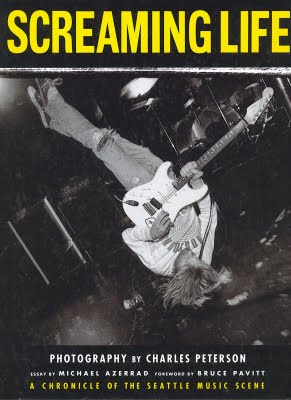
Charles Peterson unofficially became THE photographer of the grunge movement. You’ve seen his photos in magazines, album liner notes, and elsewhere. Screaming Life was his first collection of photographs. Now out of print, you might be able to find this book in your local used bookstore or on eBay. Features classic photos of Nirvana, Mudhoney, Soundgarden, L7, Screaming Trees, and more.
Touch Me I’m Sick
Charles Peterson
powerhouse books, 2003
Peterson’s most recent music photo book, Touch Me I’m Sick, could be looked at as the “sequel” to Screaming Life. Featuring his trademark “flash and drag shutter effect,” Touch Me I’m Sick showcases so many great photographs that became synonymous with the raw energy of northwest rock. Definitely a book for your coffee table.
